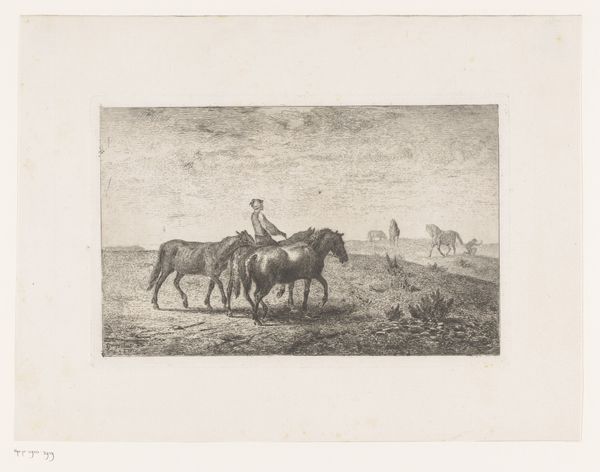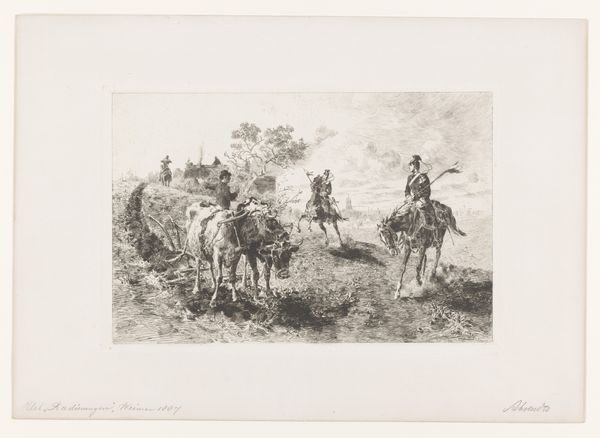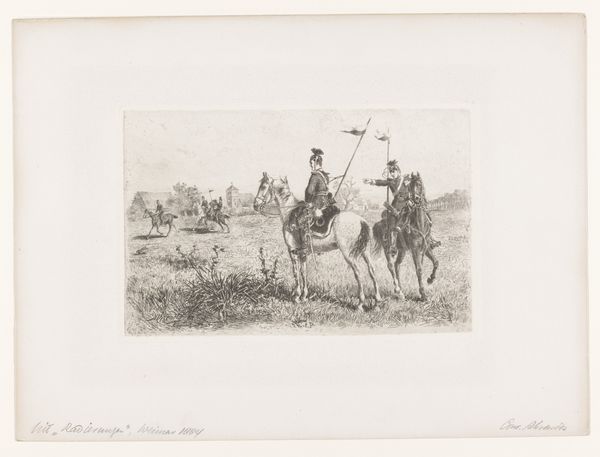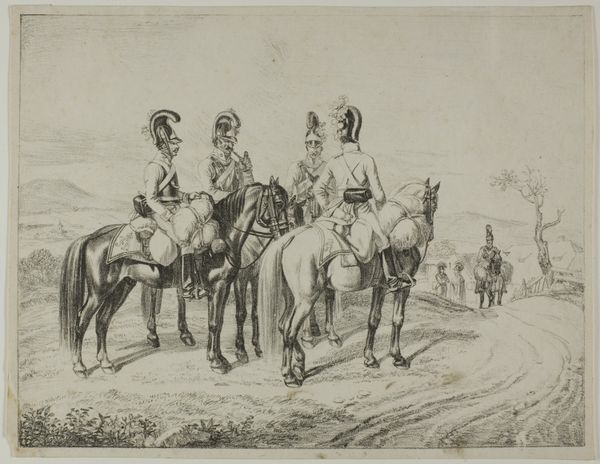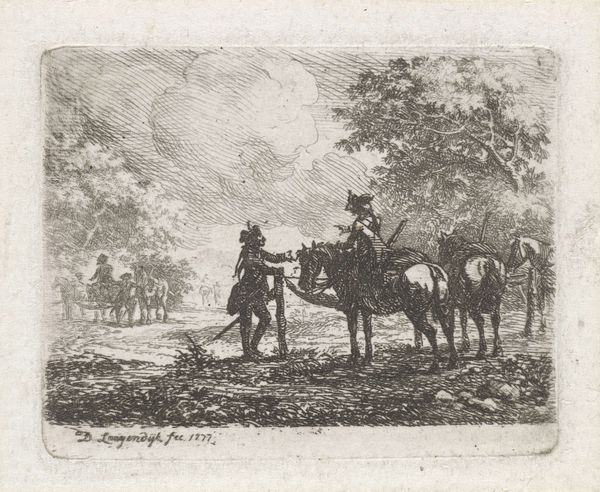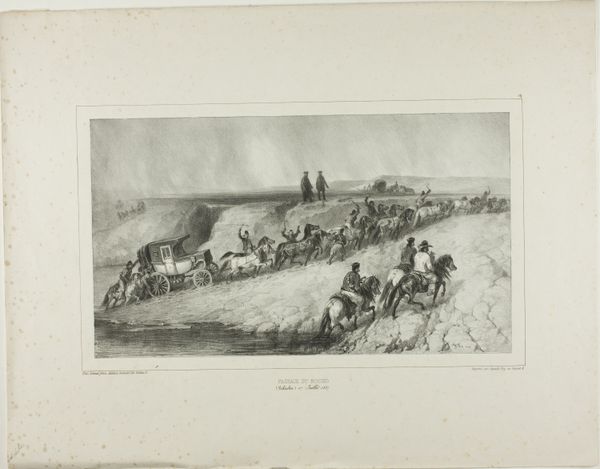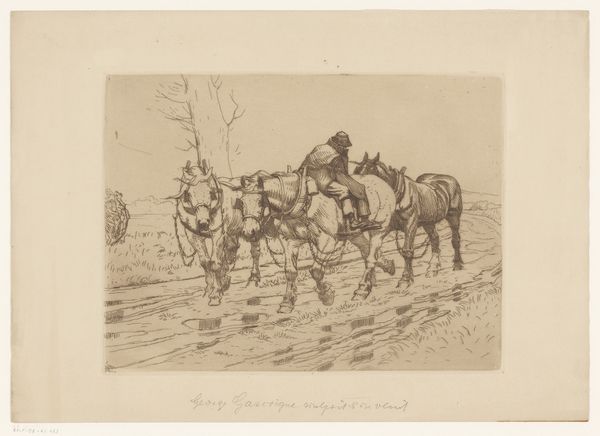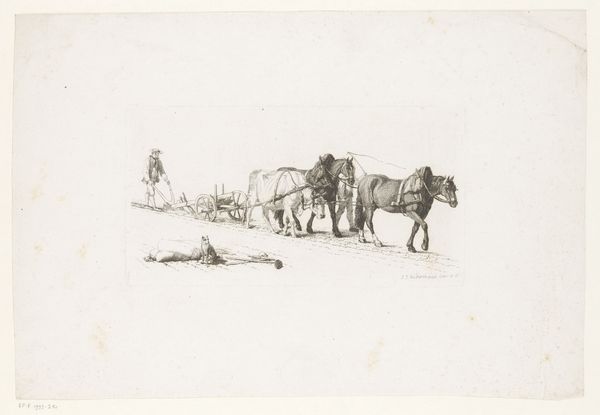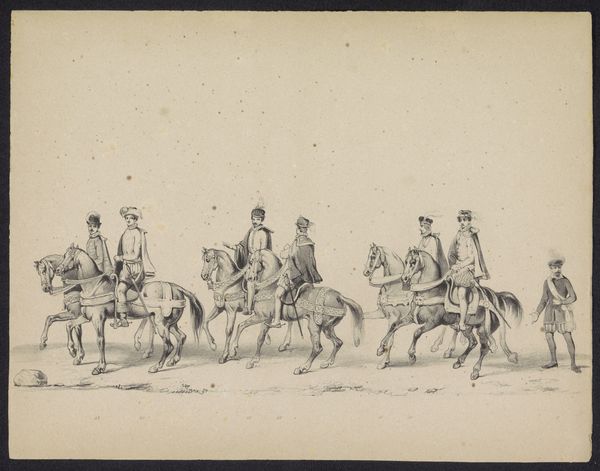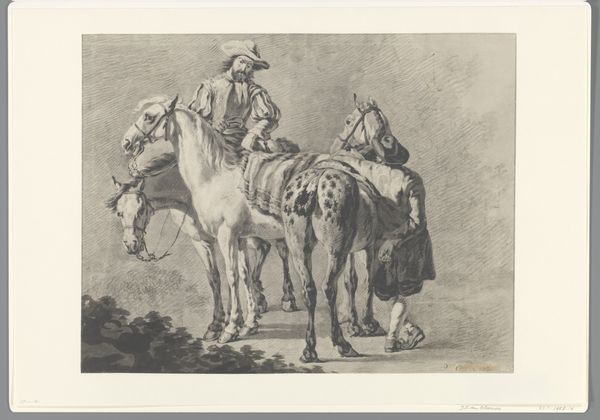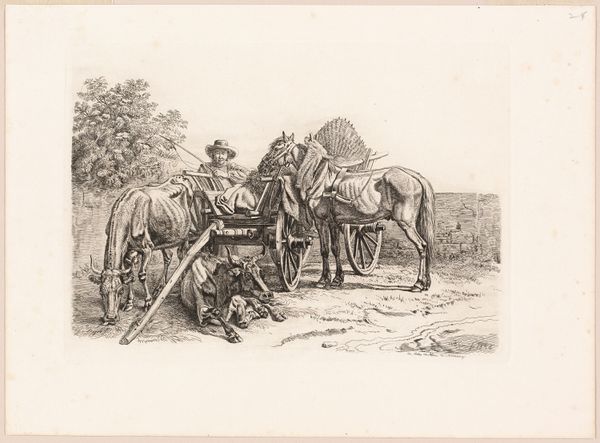
print, etching
#
narrative-art
# print
#
etching
#
landscape
#
figuration
#
romanticism
Dimensions: height 144 mm, width 192 mm
Copyright: Rijks Museum: Open Domain
Editor: So, this etching by Pierre Jean Baptiste Leroy, "Herders met hun dieren en een troep cavalerie," dates back to 1805. The light and shadow create a striking contrast. What story do you think it's trying to tell? Curator: It speaks to a very particular historical moment. The early 19th century was marked by significant social and political upheaval. The figures on horseback likely represent an occupying force or authority. The etching invites us to think about power dynamics – the herders as symbols of the pastoral idyll, now confronted with military presence, perhaps symbolizing the intrusion of conflict into daily life, a rupture between idealized rural existence and harsh political reality. Editor: That makes me think about the contrast between the active cavalry and the static herders. The composition emphasizes the power differential, doesn't it? Curator: Exactly. Consider the gaze. Who is looking at whom? The soldiers appear to be surveying or commanding. How does that relate to contemporary discussions around surveillance and control, even today? Do you think there's a deliberate romanticization of the herders in contrast to the militaristic representation? Editor: Possibly. The figures on horseback are so much more detailed than the herders, who are presented more as a faceless collective, almost like an extension of the natural environment. Is that an intentional decision on the artist's part? Curator: Very likely. What does it suggest about how power is represented, and whose stories are considered important, or even visible? Even the act of choosing what to depict, and how, reinforces existing structures of dominance. Editor: This has completely shifted my understanding! I initially saw a simple landscape, but it’s a complex reflection of its time, isn't it? Curator: Precisely! Art provides critical insight, and the real power lies in examining context and drawing parallels with current conversations.
Comments
No comments
Be the first to comment and join the conversation on the ultimate creative platform.
